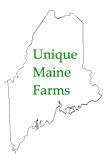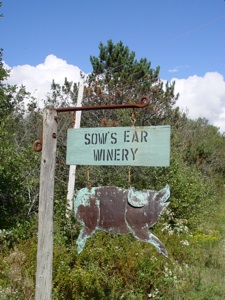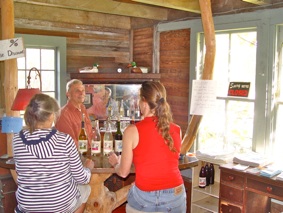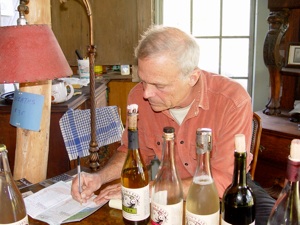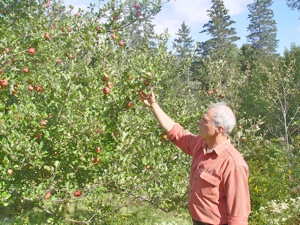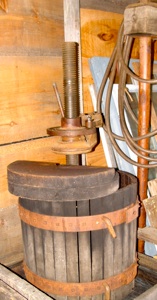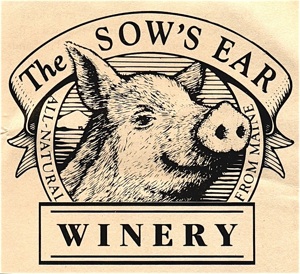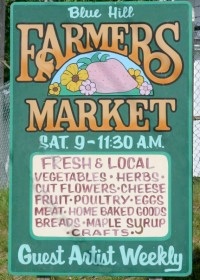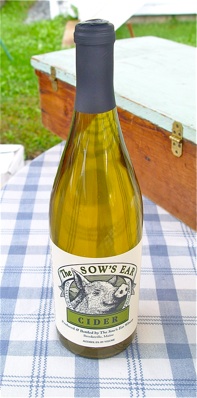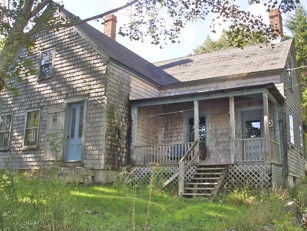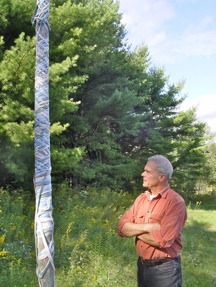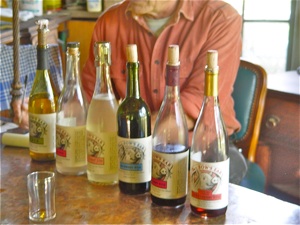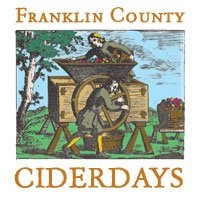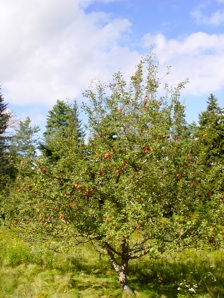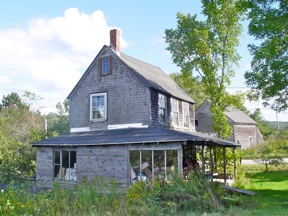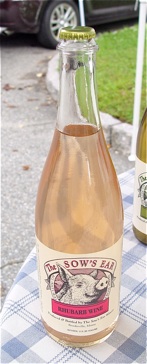Name: The Sow’s Ear Winery
Address: The Sow’s Ear Winery
Tom Hoey
303 Coastal Road
Brooksville, Maine 04617
Phone: 207-326-4649
Tasting Room Hours:
Summer Through Fall - Tues. through Sat.
10 a.m. - 5 p.m.
Products and Services:
-sparkling cider
-rhubarb wine
-sparkling rhubarb
-blueberry wine
-wild berry wine
-choke cherry wine
-wine tasting room
-farmers’ markets
What Makes Sow’s Ear Winery Unique?
The expression, “You can’t make a silk purse out of a sow’s ear” was first recorded in 1518 in The Ecologues of Alexander Barclay. The saying expresses the idea that it is difficult to create something of great value out of an item that is considered to have little worth. Tom Hoey named his winery “Sow’s Ear Winery” and the success that he has acquired as a vinter certainly challenges Barclay’s assertion about the value of a “sow’s ear” in regard to this particular enterprise.
It is not surprising that Hoey would have chosen a name for his winery that is associated with medieval literature, as he majored in English in college. His interest in anthropology, his service in the Peace Corps, his work as an arborist, and his many years of homesteading have all combined to make him quite an interesting individual. Hoey’s love for reading and learning is obvious as soon as you enter The Sow’s Ear Winery’s tasting room. There are shelves of books that focus on medieval architecture and social and political history. When asked how he acquired his skills as a vinter, Tom responded that he experimented for many years, read a great deal, and visited other wineries and cider operations.
The choice of the sow as part of his business logo is also appropriate because it fits well with the casual and agricultural atmosphere of the winery. There is no question that the antics of farm pigs often provide some lighthearted entertainment. Tom used to raise pigs and goats and chickens. The orchard, the fields, and the weathered buildings and the antique equipment on the property give the feeling of a welcoming old farm. The old rack and cloth press and the rustic oak barrels contribute even further to the down-to-earth old-time quaint atmosphere. The beautiful copper sign of the sow, that was crafted by Rebecca Raye of East Blue Hill, is a great addition to the entrance of the winery.
There are over one hundred trees behind the tasting room in the orchard that Tom planted at his farm. No sprays are ever used on any of his trees. There are sixty different kinds of apples in the orchard including many heirloom varieties such as Northern Spy, Golden Russet, Ashmead’s Kernel, Black Oxford, Baldwin, Fameuse, Coleman Sweet, Scott Winter, Davey, Milo Gibson, Hiburnal, Wolf River, and Foxwhelp. With his background as an arborist, Tom is adept in pruning and grafting. He has acquired scions from many different locations in New York state and throughout New England. Through living on the farm he has developed many other skills including logging, carpentry, equipment repair, and timber-frame construction.
While many vinters over the years have regarded wines that do not use grapes as substandard, Hoey fully understood the value of utilizing the apples and wild fruits growing in his local area. He made a conscious decision, before many other vinters, to incorporate the fruits and berries into his winery operation. He had tried in the early days to make wine solely from grapes, but he found the results discouraging because Maine’s growing season is so short, and compared to other locations, the temperatures remain quite cool.
The Sow’s Ear Winery produces dry, organic fruit wines. His Rhubarb Wine is made from local, organically-grown rhubarb stalks from King Hill Farm in Penobscot. Hoey describes the natural tartness of the Rhubarb Wine as translating into a wine fruity enough for an aperitif, which is a drink people consume before eating a meal. He also commented that it was a dry wine that could be consumed during a meal.
The Sow’s Ear Blueberry Wine is produced from the organic wild-bush blueberries grown by Quentin Young of Young’s Blueberries in Sedgwick. Hoey commented that the wild blueberries create “an intense full-bodied red - this is the one for cellaring.” Hoey also makes a Wild Berry Wine that is a semi-sweet blend of apples, blueberries, and cranberries. Small amounts of grapes, currants, and chokeberries are also added. One of the newer fruit wines that Tom has introduced for sale is Choke Cherry Wine. He travels to Aroostook County to harvest the wild chokecherries.
Traditional English-style hard ciders are produced at The Sow’s Ear Winery. The ciders are made from the apples from Tom’s orchard and some of the wild trees on the Penobscot Peninsula. The cider is fermented by the wild yeasts in the sixty-gallon oak barrels at cool temperatures in Tom’s cool stone cellar. His blueberry wine is fermented in the warm stone cellar that was built under one of the timber framed additions to his house that he constructed.
Tom’s house, the old Fowler homestead, was built around 1870. When he purchased it in 1975, it had no running water or bathroom. Tom and Gail and their children lived without running water until 1985. There were many winter days that involved breaking the ice to obtain the water. In 1995, Gail’s parents were welcomed to live in the house and Tom built a timber-frame addition and a bathroom was installed. He is still working on another timber-framed addition that will add a large kitchen area.
The building where the tasting room is located was constructed by Tom from elm timbers from the historic elm trees in the area that he had to cut down due to the Dutch Elm disease. It was built in 1984, but its weathered look makes it appear to be a much older structure. The second floor with the many windows was the area where Gail kept her looms for her weaving.
Tom has mastered the lost art of making hard cider through reading a great deal, visiting long-time cidermakers in England, and experimenting with the process for many years. His first attempt at hard cider took place in 1983, and he began selling it commercially in 1991. He enjoys traveling to the Franklin County CiderDays that are held the first weekend in November in Franklin County, Massachusetts. He provides the hard cider for the tasting area and enjoys attending the talks and meeting with other cider makers.
The Sparkling Cider which Tom produces at The Sow’s Ear is fermented by the method champenoise, in which the effervescence is produced by secondary fermentation in the bottle. The process of taking the sediment out of the bottle (which is called disgorgement) is done by hand. Tom explained that “No sugars or sulfites are added to the dosage, creating a crisp, tart, natural style.”
The Tasting Room is open at The Sow’s Ear Winery during the summer months on Tuesdays through Saturdays from 10 a.m. to 5 p.m. The decor and rustic appearance adds to the quaint, laid-back atmosphere. The tasting table is a large section of a tree with branches that reach upwards. It is truly a work of art. There are old books for sale and beautiful handcrafted wreaths that were made by Gwyneth, a member of the family.
In the orchard is a fifteen-foot May Pole that is adorned with woven materials. Gail Disney, Tom’s wife of twenty-nine years, passed away in 2004 from breast cancer. She was well-loved in the area and known for her artistry and weaving. Each May Day she would lead the May Day Dance around the May Pole. The cloth strips that she dyed and fashioned were woven around the pole as the girls and women in attendance danced two intertwining circles.
A sense of free-spiritedness and a willingness to experiment with new methods and products are evident at The Sow’s Ear Winery. The Winery is a member of the Maine Winery Guild and they are one of the twenty wineries found on the Maine Wine Trail. Individuals interested in visiting the various wineries can bring a Wine Trail Passport and have it stamped at each winery. When individuals have visited eight or sixteen different wineries on the trail they are eligible for special gifts.
Visitors to the Sow’s Ear Winery might have to wait a moment to connect with Tom, as he is the only individual who is involved with the operation. He is often outside tending the apples and berries or in the cellar with the wines. There is a bell that can be rung if he is not in the tasting room. From the recognition that he has received and the great reviews for his cider and wines, it appears that it is well worth any wait that might possibly happen to materialize.


